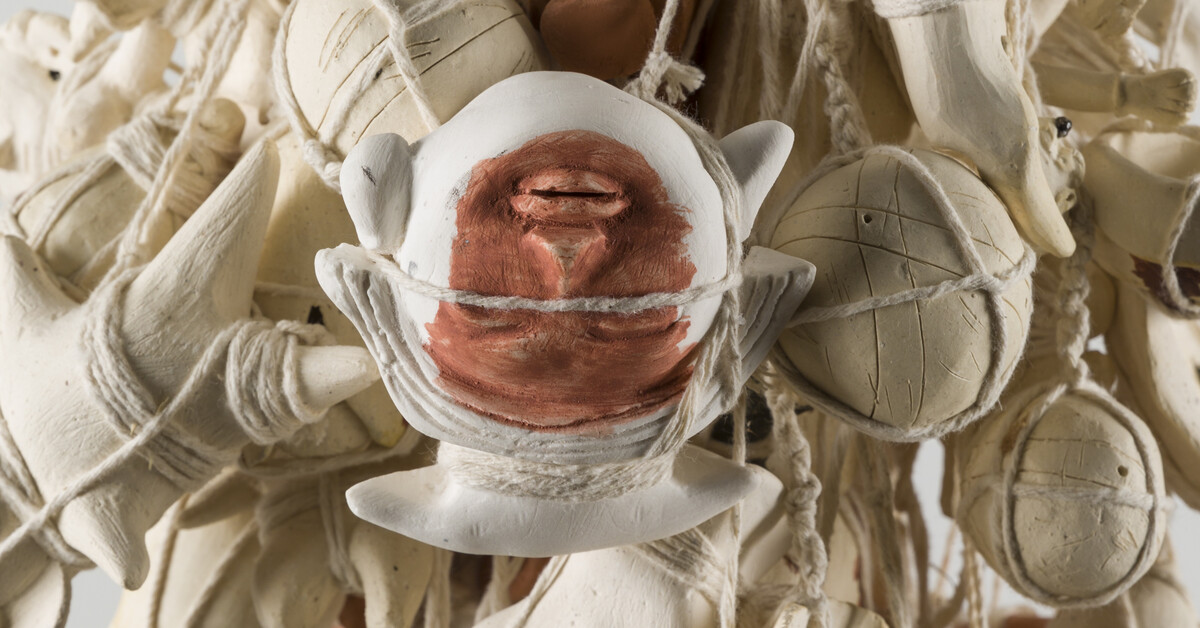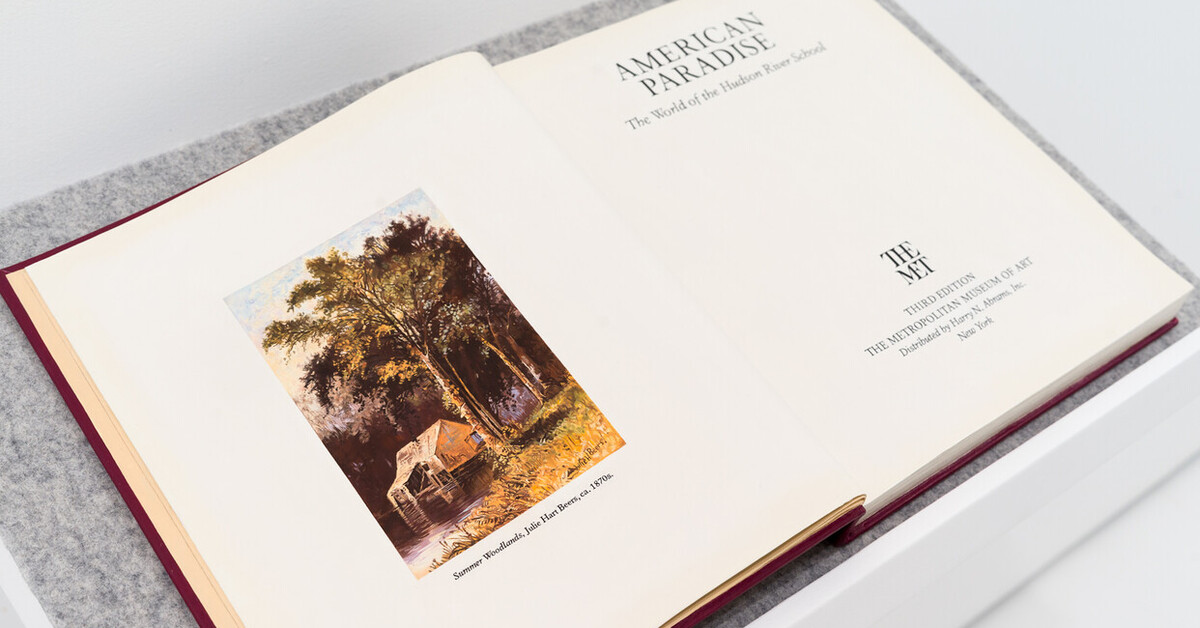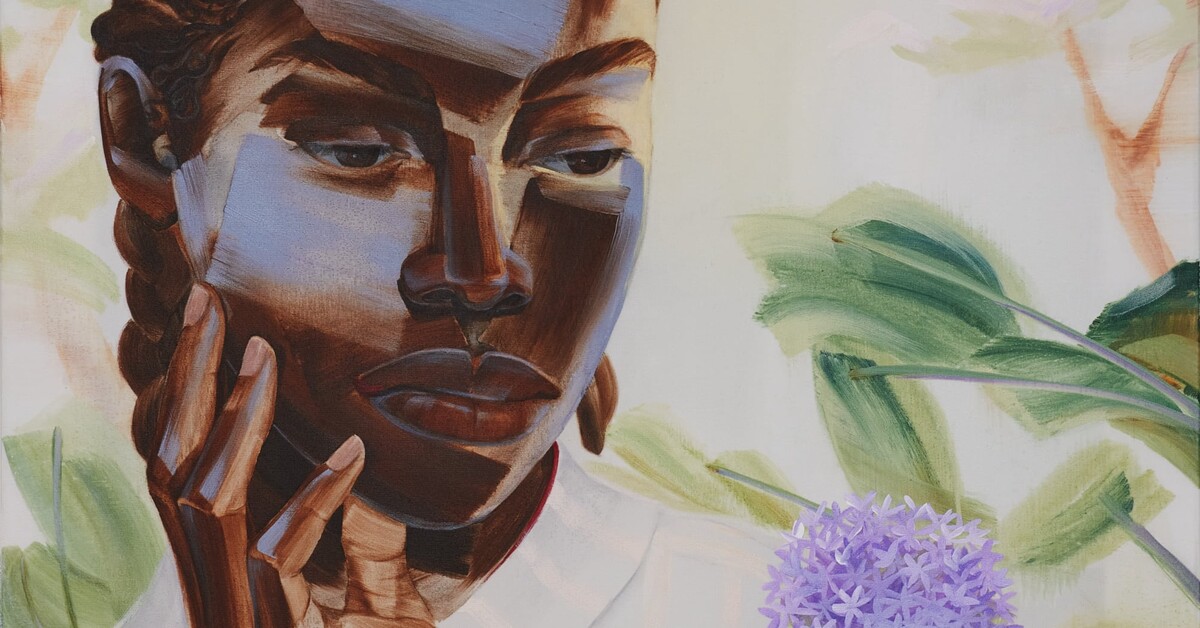Speculative Writing Systems: A Review of Caroline Kent’s “The Sentimental Hand” at Patron Gallery
Newcity Art / May 15, 2025 / by Alan Pocaro / Go to Original
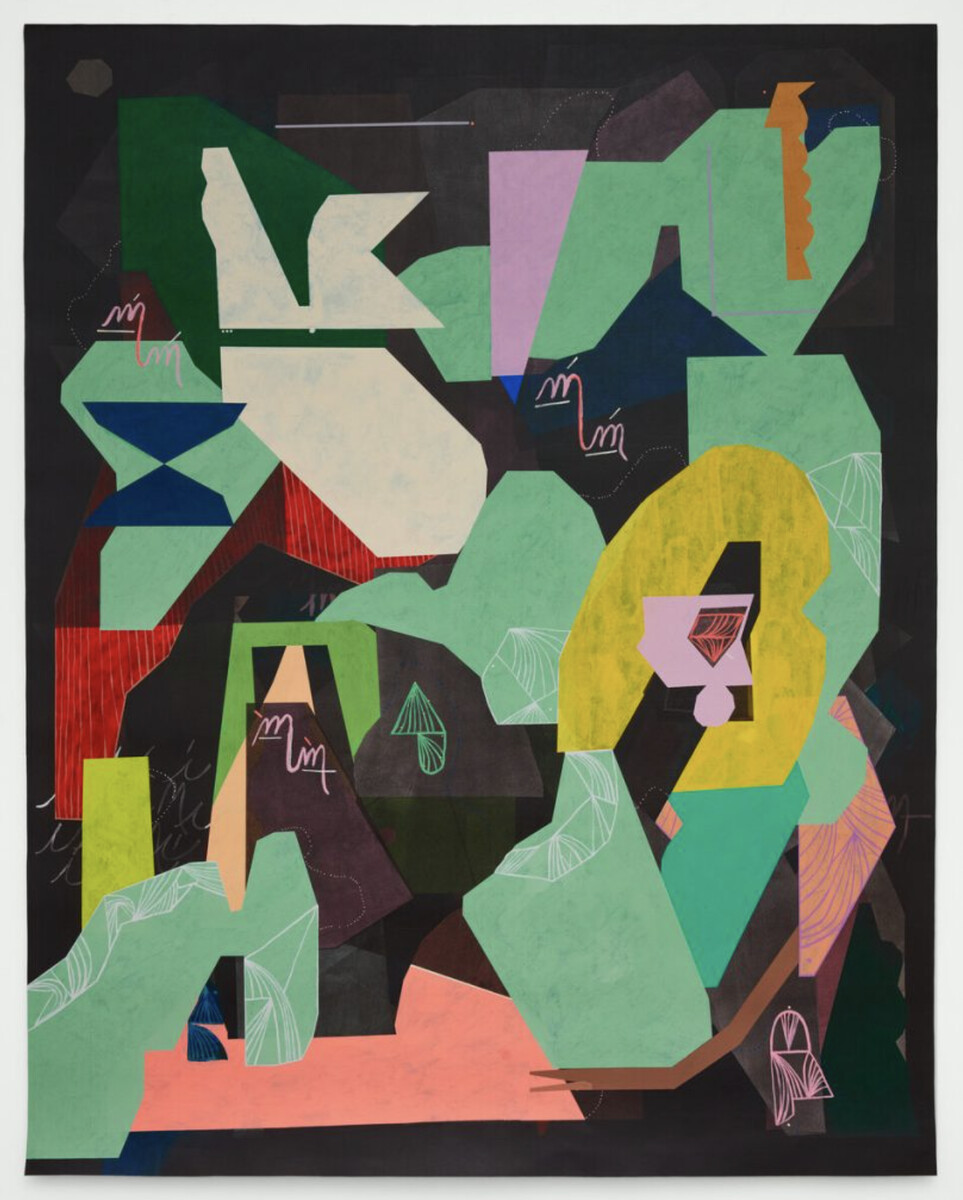
Caroline Kent, “It’s in the small sounds, that happen after dark,” 2025, acrylic on canvas, 104.5″ × 81″/Photo: Patron Gallery
There’s something deeply satisfying about watching an artist double back on their own practice—not to rehash or reheat it, but to see what might remain unsaid in the spaces between forms already spoken. That’s more or less what Caroline Kent has done in “The Sentimental Hand,” her first solo outing with Patron since 2022’s spare “Space | Shadow | Script.” It’s an exhibition that feels both summative and anticipatory, as though the artist has paused mid-career, in mid-conversation with herself, and discovered some new accent, one that brims with the confidence of someone fluent in their own unique visual vocabulary.
Across a variety of media, Kent offers a kind of collage-document stitched together from several distinct but entangled bodies of work, each circling the concept of the artist’s hand—not just as a tool, but as a recurring character. Despite the show’s title, this isn’t the legendary romantic hand of expressive genius, it’s something more procedural, maybe even bureaucratic: a hand that cuts, places, organizes, rearranges, signs off. The antecedent being Matisse, Kent begins with paper, or more specifically, with shapes cut from it, as the building blocks of her aesthetic logic. From there, the works in “The Sentimental Hand” spiral out across canvas, onto linen, into wood and pigmented cement, into the room itself, each medium absorbing and slightly distorting the syntax of the last, like an essay passed through Google Translate three or four times.
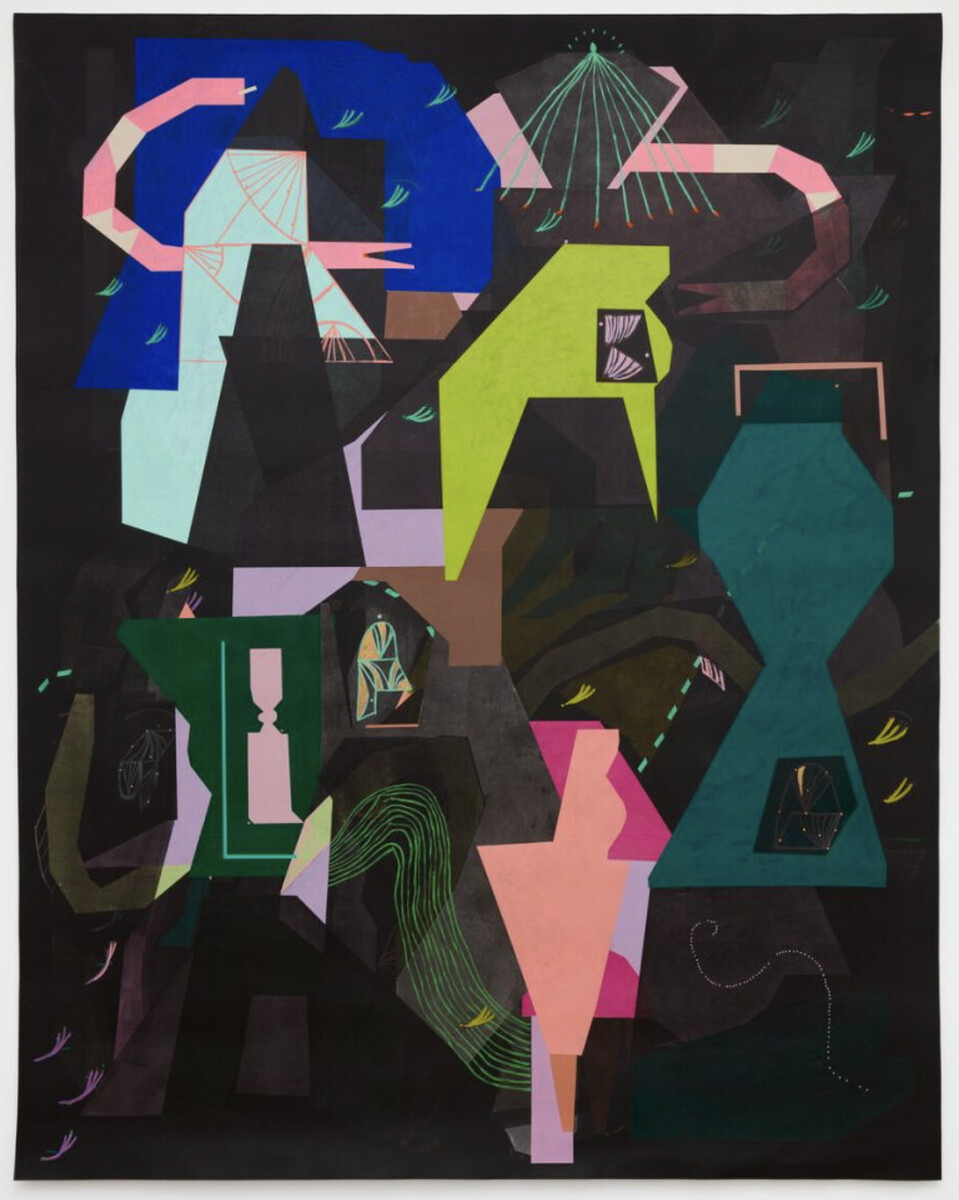
Caroline Kent, “Her left hand spoken voraciously, while her right hand tucked in her pocket,” 2025, acrylic on canvas, 105″ × 82″/Photo: Patron Gallery
Kent’s big paintings—grounded, often literally, in a gesso of broadcloth black—are like speculative writing systems. Crisp contoured shapes, meandering lines and glyph-like scribbles form the half-legible diagrams of thought where meaning doesn’t emerge so much as orbit. In large-scale works such as “It’s in the small sounds, that happen after dark” spatial tensions are compressed, tightened, pressurized into a dense symbolic script. If these works are epic (but ultimately Borgesian and undecipherable) novels, then the smaller works are dispatches, dream-notes, marginalia. They sustain a singular emotional resonance, while “..small sounds..” or “Her left hand spoken voraciously, while her right hand tucked in her pocket” are a complex tableau of many.
Elsewhere, the multiform diptychs and triptychs—Belgian linen stretched between slick, ebonized walnut frames—turn the wall into a kind of stage, albeit one with no obvious narrative arc. If anything, these decorative object/paintings function more like props or cues: a modular set of simplified visual units that relate to the tone of the larger canvas works, but don’t necessarily expand upon it. Everything in “The Sentimental Hand” is looping and circular. Colors repeat, forms migrate, surfaces shift scale. Acrylic shapes echo paper cutouts, and shadows reappear as wood inlays. You get the sense that everything is simultaneously being built, dismantled and put back together again. Living, breathing, equally pleasurable and confounding, like language itself.

